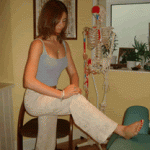
Hamstring Stretch
There are three aspects to the hamstrings, All attach to the Ischium or ‘sit bone’. Semimembranosis travels down to insert into the capsule of the inner knee, Semitendinosis inserts below the knee on the medial aspect and the Biceps Femoris is joined by a a second part from the back of the Femur and combines to insert on the head of the Fibula bone lateral and below the knee. To stretch the hamstring place the heel on a bench, hold in the abdominal muscles and straighten the knee pushing the bottom backwards, to increase the stretch lean forward slightly. If the the toes are pointed to the outside it will stretch the Biceps Femoris, to the inside the Semimembranosis and semitendonosis.
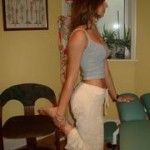
Quadriceps Stretch
Three of the four quadriceps insert from the femur to the patella so stretching as in the picture is ideal for a general stretch, however to increase the stretch, tense the abdominals and push the pelvis forward.A change of angle with the foot held in different hands may place the emphasis of the stretch on the different muscles.
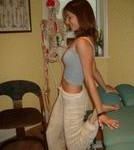 Rectus Femoris Stretching
Rectus Femoris Stretching
The Rectus femoris is the fourth muscle of the quadriceps and crosses both the knee joint and the hip to insert on the lower spine of the ilium with a small reflection inwards. It is used more in lifting the leg and kicking footballs. To stretch this muscle knee needs to seperate then pull the leg back. I like te stretch above, but ensure the abdominals are tensed and try not to arch the lumbar spine particularly if you have problems in that region. To increase the stretch lower the planted leg and push the pelvis forward.
IT Band Stretching Stretching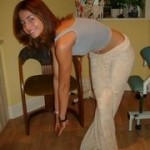
This stretch will reach into an area outside around the hip and along the lateral part of the hip. The Iliotibial band works in conjunction with the Gluteus Maximus and both need stretching to prevent pain arising around the lateral part of the knee.The muscle works hard when doing long distance running as it controls the striking position of the foot. Often when the Vastus lateralis muscle is highly developed in cyclists using high resistence or bodybuilders strengthening this muscle it pushes the IT band outwards, again causing tension.
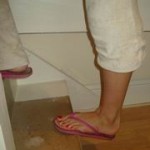 Gastrocnemius (Calf) Stretching
Gastrocnemius (Calf) Stretching
This muscle has it’s two upper insertions above the knee and can often cause compression of the knee joint. The gastrocnemius is used more when running and jumping. To stretch the muscle the leg ought to be straight as it crosses the knee joint. Regular stretching whenever a suitable step is found is very useful. Beware stretching when cold and first thing in the morning. Hold the stretches for 30 – 60 seconds.
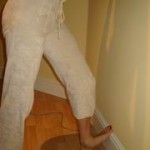 Soleus (deep calf) Stretching
Soleus (deep calf) Stretching
The Soleus lays under the gastrocnemius and is more involved with posture rather than the explosiveness of thegastrocnemius. It works more when the knee is bent such as hill walking and stairs. So the the stretch isolates te muscle when bending the knee.
Please contact clinic for more advice on Leg stretches and treatment.